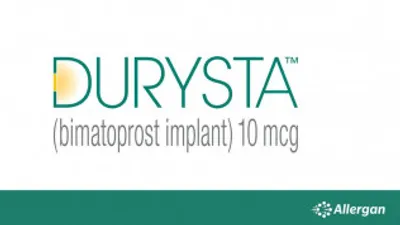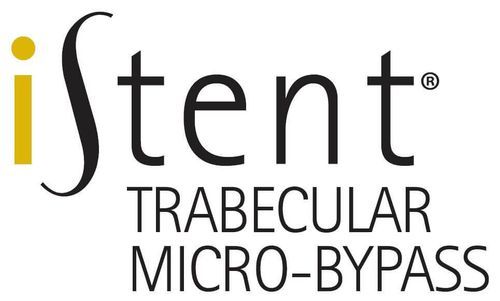Glaucoma

Glaucoma
Glaucoma is a group of eye conditions that damage the optic nerve, which carries visual information from the eye to the brain. If left untreated, this damage can lead to vision loss and even blindness. Kitsap Eye Physicians treats glaucoma and other eye conditions to help you see clearly.
What is Glaucoma?
Imagine your eyes are like a camera. Light enters through the lens and focuses on the back of your eye, called the retina. The retina contains millions of light-sensitive cells that convert light into electrical signals.
These signals travel through the optic nerve to your brain, where they are interpreted as the images you see. Glaucoma occurs when there’s a problem with this drainage system.
Fluid builds up inside the eye, increasing the pressure inside the eye. This high pressure can damage the optic nerve fibers, leading to vision loss.
Open-Angle Glaucoma
Open-angle glaucoma is the most common type of glaucoma. The drainage channels for aqueous humor are open, but fluid doesn’t drain out as well as it should.
This can happen due to various reasons, like microscopic blockages in the drainage channels. Open-angle glaucoma often develops slowly and may not cause any noticeable symptoms in its early stages.
Angle-Closure Glaucoma
Angle-closure glaucoma develops when the drainage channels for aqueous humor become completely blocked. This can happen suddenly, causing a rapid rise in eye pressure. Angle-closure glaucoma is a medical emergency and requires prompt treatment to prevent vision loss.
Does Glaucoma Have Any Warning Signs?
Although most patients don’t realize they have glaucoma until irreversible and permanent vision loss has occurred, symptoms of the eye condition can include:
Diagnosing Glaucoma
During a comprehensive eye exam, your eye doctor at Kitsap Eye Physicians will perform several tests to check for glaucoma. These tests may include:
Tonometry
Tonometry is a painless test that measures the pressure inside your eye.
Ophthalmoscopy
During ophthalmoscopy, your eye doctor will use a special instrument with a bright light to examine the back of your eye, including the optic nerve.
Visual Field Test
A visual field test measures your peripheral vision.
Imaging Tests
Sometimes, your eye doctor might recommend imaging tests like optical coherence tomography (OCT) to get a detailed picture of your optic nerve.

Treating Glaucoma at Kitsap Eye Physicians
The specific treatment approach will depend on the type and severity of your glaucoma. Here at Kitsap Eye Physicians, we offer a variety of treatment options to manage glaucoma:
Eye Drops
Eye drops are the most common initial treatment for glaucoma. Different types of eye drops work to reduce eye pressure by either decreasing fluid production or improving drainage.
Durysta

Durysta is a newer type of glaucoma treatment option. Durysta is a tiny implant placed in the eye’s drainage channel during a minimally invasive procedure in an outpatient setting. The implant slowly releases medication over time to help lower eye pressure.
Durysta is a dissolvable implant used to treat open-angle glaucoma. Here’s a more detailed look at how it works:
How Durysta Works
Durysta is a tiny, biodegradable implant made of a special material containing a glaucoma medication. During a brief outpatient procedure, your surgeon inserts the Durysta implant into a small channel in your eye that drains fluid.
Over time, the implant slowly releases the medication, helping to reduce fluid production in the eye and lowering intraocular pressure. The implant dissolves harmlessly within a few years.
Benefits of Durysta
Durysta offers some potential advantages over traditional glaucoma medications, including:
Reduced Need for Daily Eye Drops
Durysta provides sustained medication release for several years, potentially reducing the need for frequent daily eye drops. This can benefit people who find it difficult to remember or dislike putting in eye drops regularly.
Minimally Invasive Procedure
Durysta insertion is a quick and minimally invasive procedure performed in an outpatient setting. This means minimal recovery time and allows you to resume normal activities quickly.
Durysta May Not Be Suitable for Everyone
While Durysta offers advantages, it’s not always suitable for everyone. Your ophthalmologist will consider various factors, such as the severity of your glaucoma and other eye conditions, to determine if Durysta is an appropriate treatment option for you.
Intracameral Implant
Similar to Durysta, an intracameral implant is another implant option placed in the eye’s drainage channel during a minimally invasive procedure. This implant creates a small opening to help fluid drain more effectively.
How Intracameral Implants Work
Intracameral implants are tiny devices placed in the eye’s drainage channel during a minimally invasive procedure. However, unlike Durysta, which releases medication, intracameral implants act mechanically to improve fluid drainage.
Although the specific type of implant may vary, they generally create a small opening or stent to allow fluid to flow out of the eye more efficiently, reducing intraocular pressure.
Benefits of Intracameral Implants
Intracameral implants offer benefits like:
Long-Lasting Results
Some intracameral implants are designed to be permanent, providing long-term control of glaucoma.
Minimally Invasive Procedure
Like Durysta, insertion of intracameral implants is a quick and minimally invasive procedure with minimal recovery time.
Considerations for Intracameral Implants
As with Durysta, intracameral implants may not be suitable for everyone. Your eye doctor will assess your situation and the severity of your glaucoma to determine if an implant is the best course of treatment.
iStent Inject

The iStent Inject is a tiny implant inserted into the drainage channel during cataract surgery. The iStent Inject helps improve fluid drainage and can be a good option for people with glaucoma who are also having cataract surgery.
The iStent Inject is a specific type of intracameral implant designed for a particular purpose:
iStent Inject for Patients with Glaucoma and Cataracts: The iStent Inject is a tiny implant specifically designed for people with glaucoma who are also undergoing cataract surgery. This implant helps improve fluid drainage and can be a valuable option for managing glaucoma while simultaneously addressing cataracts.
Benefits of iStent Inject
The iStent Inject offers a convenient and effective way to address glaucoma and cataracts in a single procedure. This can minimize the number of necessary procedures and streamline your treatment plan.
Laser Surgery
In some cases, laser surgery might be an option to create a new drainage channel for aqueous humor or to improve the function of existing drainage channels.
Surgery
Traditional surgical procedures are less standard, but your eye doctor may recommend one of these procedures if you have a certain type of glaucoma that is not well controlled with other treatments.
Talking to Your Ophthalmologist About Glaucoma Treatment
If you’ve been diagnosed with glaucoma, it’s essential to discuss all your treatment options with your eye doctor at Kitsap Eye Physicians. They will consider the type and severity of your glaucoma, overall health, and lifestyle preferences when recommending the most suitable treatment approach.
Early detection, consistent treatment, and regular follow-up care are crucial for managing glaucoma and preserving your vision for years to come.
Request an appointment at Kitsap Eye Physicians in Port Orchard and Bremerton, WA, today to learn more about glaucoma and available treatment options.

